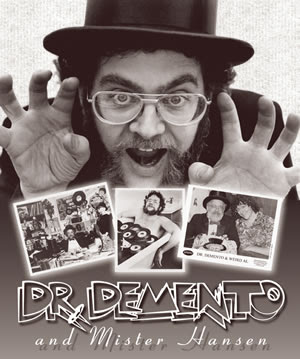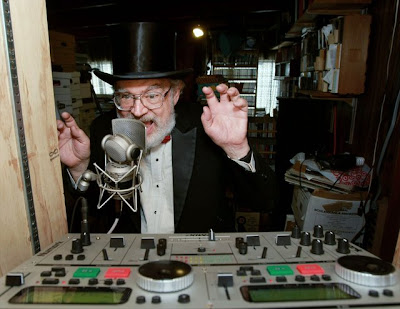 |
| Books on Wheels from Richmond providing free books and bike repair at the Our Community Place Lawn Jam in Harrisonburg, Va. Photo by Artzcerxes/Wikipedia. |
Bookmobile and mobile libraries are designed to service areas that have no access to books or library materials. In modern countries, they sometimes service people who cannot get to libraries, such as residents of retirement homes. Some even carry audio and large print books to homebound people who have no one or no way to go to a library.
 |
| Mobile library at a bus stop in Garden City, Oberesslingen. Image from 2006, courtesy of Zwiegel/Wikipedia. |
The first written report of one came from the UK, from 1857 in a detailed report of a perambulating library operating in a circle of eight villages. In 1859, the Warrington Perambulating Library was run by the Warrington Mechanic's Institute to increase its annual circulation of books. The cost in its first year was £275, but the library lent 12,000 books.
 |
| Possibly the first UK mobile library, started in 1859. Image courtesy of Wikipedia. |
A mule-drawn wagon carried wooden boxes of books in Chester Co., South Carolina in 1904 by the People's Free Library. In 1905, the Washington County Free Library in Maryland was one of the first U.S. book wagons to take books directly to homes in remote parts of the county.
 |
| Exterior and interior views of Vermont's traveling library from 1902. Images courtesy of Wikipedia. |
Today, the Internet Archive Bookmobile allows one to access, download and print any of its almost 20,000 public domain books currently available online, in your choice of type size.
Many countries have them:
 |
| Photo from 1970 by Safar Nameh of a mobile library in Kordestan, Iran, courtesy of Wikipedia. |
 |
| Mobile library in Kajaani, Finland, courtesy of mace/Wikipedia. |
 |
| Mobile library of Varde, Denmark from 2002, decorated by Seppo Mattinen. Image courtesy of Wikipedia. |
 |
| Mobile library boat - the MS Epos - in Bergen, Norway. Image courtesy of Anders/Wikipedia. |
But what about countries that aren't so modern? That are struggling economically and can't afford the "luxury" of books? Well, readers and educators are persistent, and there are some very unique and admirable programs going on in parts of the world.
In Thailand, elephants are used to take books and IT equipment to remote villages. They also provide PCs, modems, a solar panel, and a satellite dish. The elephant is lured into the correct satellite position when his basket of food is placed correctly.
 |
| Both images courtesy Cambridge Library, UK. |
Once at their destination and correctly oriented for the satellite, the elephants are tethered and fed. Bamboo canes are hung around them, which are then wrapped with polythene sheets with pockets on them, which is where books are placed.
 |
| Camel Library Service photos here and below courtesy of Wairimu Gitahi/BBC. |
Africa has two notable programs: one with camels and one with donkeys. The Camel Library Service in Kenya, funded by the Kenyan government, began in 1996. In 2006, 7,000 books in English, Somali, and Swahili were delivered. Many of the books are supplied by Book Aid International, a charity which gives half a million books a year to some of the world's poorest countries.
In 2002, the International Federation of Library Associates and Institutions (IFLANET), assessed the Donkey Drawn Libraries in Zimbabwe. The literacy rate in the area served was estimated to be 86%, compared to a national figure of about 31%, which was attributed to the program. The carts were initiated by the communities served, who were also directly involved in the project, which perhaps explains their success.
 |
| Image here and below courtesy of IFLANET. |
The mobile units are called Donkey Drawn Electro-Communication Library Carts. Each cart has a solar unit installed on the roof that charges a battery. Audio-visual equipment is in a cabinet at the back of the cart and the sides hold storage for the battery, books, music CDs, records, and videos. Some have an aerial or a satellite dish. They function as a communication center with radio, telephone, internet, and email capabilities.
Luis Soriano came up with a solution for his area of Colombia about twelve years ago. He gathers his donkeys, named Alfa and Beta, straps pouches to their backs filled with books, and heads out to reach the people who live in small villages.
As a young teacher, he was impressed with the impact that could be made on people's lives through reading and education. Not content to work with his own local students, he came up with this way to reach those who had no access. He not only delivers books, but also reads them to his audience. There is a website (in Spanish) for his program that can be seen here.
 |
| Images above courtesy of the site. |
Even the poorest countries value books and learning. Every type of mobile book-lending invention serves to offer a chance for some type of education where no other kind exists. E-books can't do it. In the end, real books save lives.
*******************************
















































